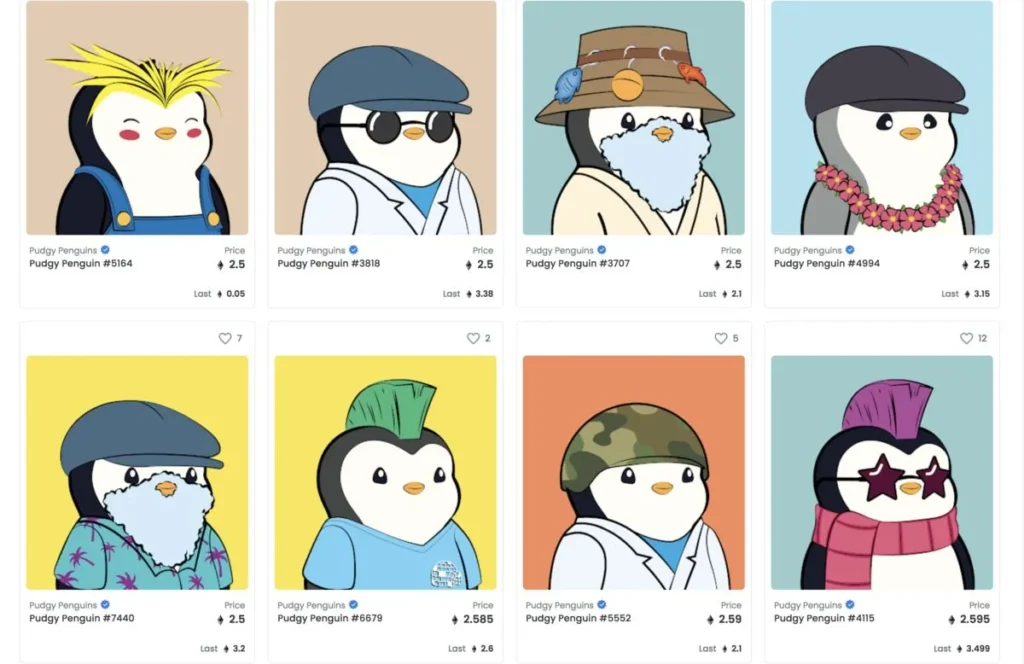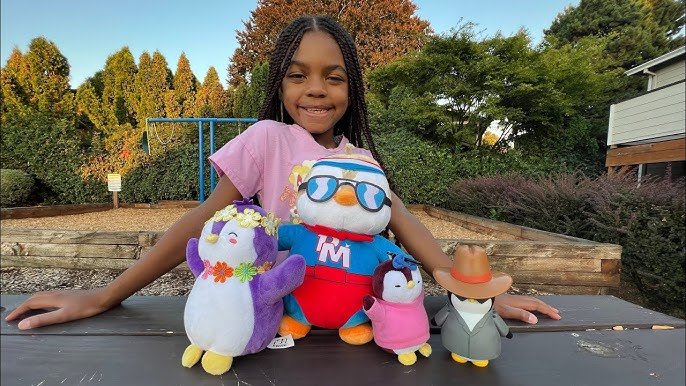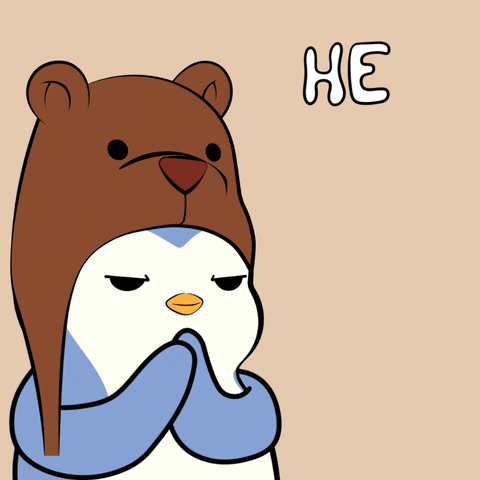
Discover how Pudgy Penguins evolved from a failing NFT project into a billion-dollar Web3 brand through toys, tokenomics, and community-driven IP. A powerful case study in brand building, culture, and digital ownership.
Author: Sahil Thakur
Published On: Tue, 05 Aug 2025 04:46:42 GMT
What do cartoon penguins, plush toys, and blockchain have in common?
If you said “nothing,” that would have been true in 2021. But in 2025, the answer is Pudgy Penguins, a once-failing NFT project that turned into a cultural phenomenon and one of the most successful Web3 brands in the world.
In a landscape littered with broken promises and failed crypto projects, Pudgy Penguins defied the odds. They became a billion-dollar brand by focusing on something most NFT founders ignored. They built for people, not just wallets.
This article breaks down how Pudgy Penguins pulled off one of the most surprising transformations in tech and culture, and what the rest of the world can learn from it. Here is – Pudgy Penguins, Explained.
Pudgy Penguins launched in July 2021 during the height of the NFT gold rush. A set of 8,888 chubby penguins, each uniquely generated, sold out within minutes. They were adorable, quirky, and built for profile pictures. Instantly, Pudgy Penguins became one of the most talked-about collections on crypto Twitter.
But the early hype masked deeper problems. The founding team was young and inexperienced. They promised games, books, and future content but failed to deliver anything of substance. Community members grew frustrated. Confidence plummeted. NFT prices crashed.
Another huge issue were reports of internal conflict and drama. There were accusations that the main founder, Cole Villemain had tried to sell the project’s treasury for personal gain, culminating in leaked DMs that put Cole in negative light.
By early 2022, most people had written the project off as yet another crypto rug pull.

That’s when entrepreneur Luca Netz entered the picture.
At the time, Netz was already known for his background in e-commerce and brand building. But he wasn’t a typical crypto bro. He saw Pudgy Penguins not as a financial asset, but as an undervalued brand with strong emotional potential. The penguins had personality, charm, and an engaged community that just needed direction.
Luca acquired the brand and IP rights in April 2022 and made it clear from day one that he wasn’t here for short-term gains. He believed Pudgy Penguins could become a generational brand , something on the level of Hello Kitty or Pokémon.
That belief guided every decision that followed. No fluff. No overhyped roadmaps. Just focused execution and real-world strategy.
Luca Netz brought a brand-first mindset to a space obsessed with price charts and flipping NFTs. His first move was radical for Web3 – he ignored floor prices and speculative trading. Instead, he focused on building products and experiences that everyday people could enjoy.
One of the boldest decisions was launching Pudgy Toys, a physical product line featuring plush penguins and collectible figures. But these weren’t just toys. Each came with a QR code that unlocked digital items inside Pudgy World, a blockchain-powered platform built for non-crypto users.
This created a physical-to-digital bridge that few others had accomplished. It let kids buy a toy in Walmart and, within minutes, step into a gamified digital space powered by blockchain without even knowing it.
Netz’s leadership approach was all about lowering friction. While most Web3 projects required users to set up wallets, manage seed phrases, and deal with confusing interfaces, Pudgy Penguins prioritized accessibility. If Web3 is ever going to go mainstream, this is the kind of design it needs.

At the heart of this vision is Pudgy World, an online universe where users can interact with their penguins, customize characters, earn rewards, and participate in challenges. It combines the simplicity of Web2 platforms with the ownership and interoperability of Web3.
You don’t need to be a crypto expert to use it. You don’t even need a wallet to start. By scanning a code from a toy or linking through a social login, users enter Pudgy World where they receive a digital penguin avatar, accessories, and digital rewards. Behind the scenes, this is all running on blockchain infrastructure but it feels like any other casual digital experience.
This stealth onboarding has been one of Pudgy Penguins’ most powerful strategies. Instead of asking users to come to Web3, they brought Web3 to users hidden inside joy, play, and good UX.
Another major shift under Luca’s leadership was the media strategy.
Rather than relying on the narrow channels of crypto Twitter or Discord, Pudgy Penguins built a massive presence on mainstream platforms like TikTok, Instagram, YouTube Shorts, and Giphy. Their content was wholesome, funny, and incredibly shareable. Think penguins spreading kindness, telling jokes, or dancing to trending audio clips.
This turned out to be a gold mine.
Billions of GIF views. Millions of followers. Thousands of pieces of user-generated content. All of it made Pudgy Penguins not just a digital asset, but a part of pop culture.
When people encounter a Pudgy Penguin on Instagram or see a toy at Walmart, they feel familiarity. That’s what brand equity looks like. It’s not about token utility. It’s about recognition, consistency, and emotion.

Pudgy Penguins didn’t stop at toys and social content. They went big on brand activations and licensing.
They signed a publishing deal with Random House to release a children’s book. They partnered with sports teams to bring Pudgy mascots to real stadiums. They even launched a special-edition PEZ candy collection and collaborated with Lufthansa’s loyalty program to turn purchases into real airline miles.
Behind the scenes, they built Overpass IP, a licensing platform that lets NFT holders license their individual penguins for use in products and media. This meant the community could benefit financially if their penguin became a toy or a character in the book.
This system creates a self-reinforcing loop. As the brand grows, so does the value for its supporters. Not just in speculation, but in real-world opportunities.
In December 2024, Pudgy Penguins launched its native token, $PENGU, on Solana.
At launch, the token saw a massive surge, followed by a sharp pullback. That’s typical for new coins, especially those tied to strong online communities. But Pudgy didn’t leave it there.
They made sure $PENGU had real utility. It can be used inside Pudgy World to buy digital items, access exclusive experiences, and more. It is accepted on the Pudgy online store and is being integrated into loyalty programs where you can earn real rewards for spending it.
They also made smart tokenomics decisions. The supply was broad and community-driven. And when bots started abusing the airdrop claim system, they shut it down early and burned over 12 billion unclaimed tokens to support long-term value.
This showed the team wasn’t just chasing headlines. They were managing an economy.

Pudgy Penguins didn’t become a billion-dollar brand by luck. They succeeded because they understood some fundamental truths that apply far beyond Web3.
Pudgy Penguins turned a speculative asset into a platform for storytelling, play, and community. That is brand building at its finest.
Today, Pudgy Penguins ranks among the top NFT collections in the world. It’s not just holding its value, it’s expanding into new markets, gaining new fans, and evolving its platform.
There are plans for more books, animation projects, international retail rollouts, and expanded game mechanics in Pudgy World. The team is also developing its own Ethereum layer 2 network, making the experience even faster and cheaper for users.
In many ways, Pudgy Penguins is building the Disney of Web3. But unlike Disney, the fans own a piece of it.


ANYONE Community Unfiltered: How Far Can They Push Digital Identity?
Crypto’s Long Term Failure: Why Crypto Can’t Build Anything Long Term
Binance Blockchain Week: The Crypto Event That Actually Matters
Neobanks and Crypto: Explained
ANYONE Community Unfiltered: How Far Can They Push Digital Identity?
Crypto’s Long Term Failure: Why Crypto Can’t Build Anything Long Term
Binance Blockchain Week: The Crypto Event That Actually Matters
Neobanks and Crypto: Explained